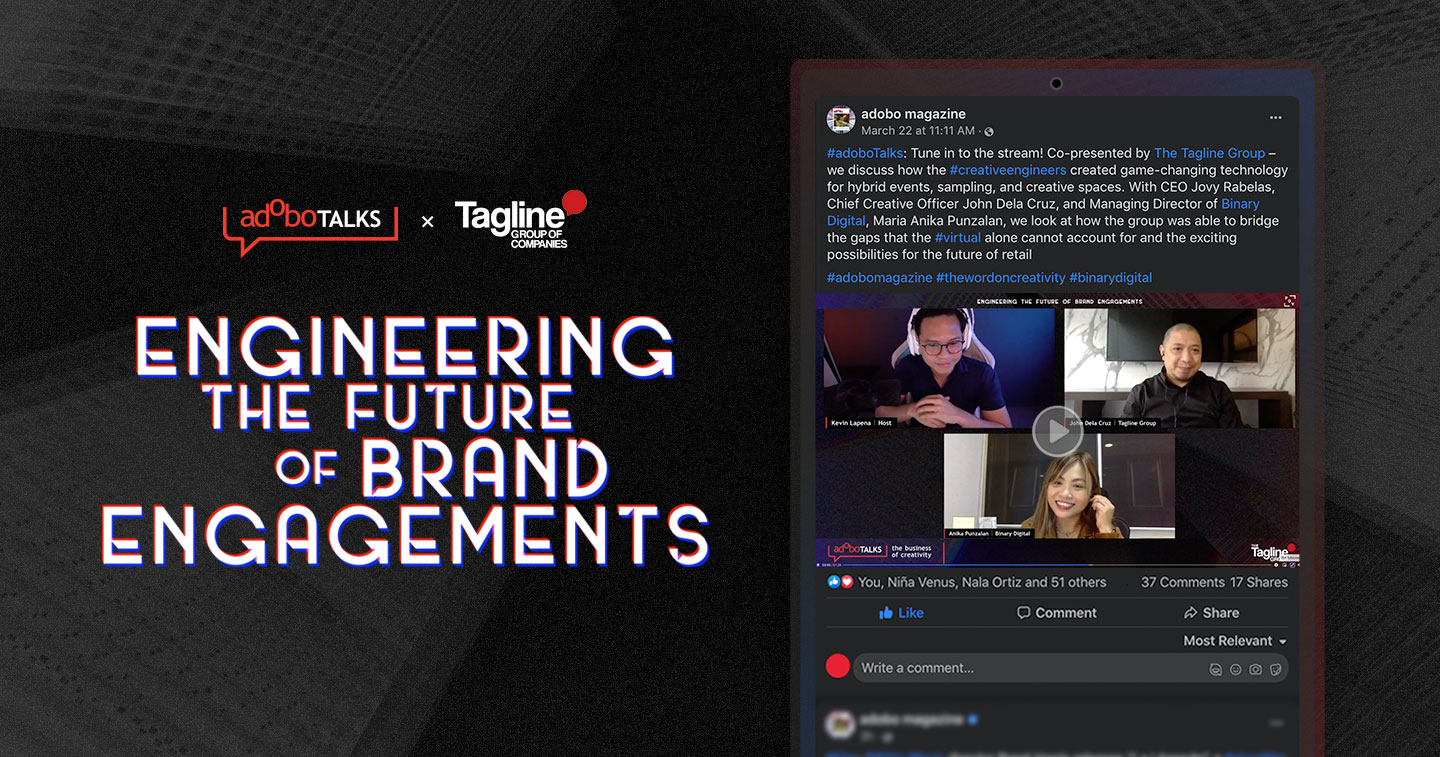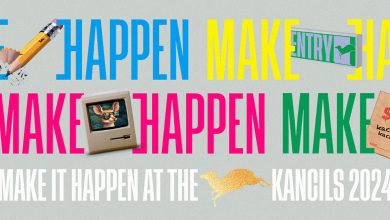MANILA, PHILIPPINES — The coronavirus pandemic has caused dramatic disruptions in daily life, as people were forced to stay indoors, while businesses and institutions were compelled to adapt to new protocols and health measures. Brands were no exception — after all, they needed to revisit how they connect with their audiences amidst changing habits and new, emerging needs.
Aside from the lack of physical interaction, the record-high online activity and shifting consumer behavior have shaped the need for brands to capture a targeted audience and create meaningful engagement, even online. With face-to-face interactions that ranged from few to none, brands were presented an opportunity to seize a highly engaged online cohort.
That said, it is not enough to know where one’s audience is. After all, users can only take so many Zoom calls and webinars. Enter the Tagline Group, who came to the fore as “creative engineers”, introducing game-changing hybrid events, sampling, and creative spaces through innovative technologies and creativity-based solutions.
While keeping in line with the parameters of the new normal such as limited gatherings and travel restrictions, the Tagline Group set out to launch an array of projects that centered on a hybrid, “low-touch” approach: out-of-the-box solutions that enabled brands to connect with their consumers even without or significantly less physical interaction.
A year after the quarantine was first implemented, just how “new” our new normal is going to be still remains to be seen. According to John Dela Cruz, Creative Director of the Tagline Group, hybrid activations — a combination of in-person and online experiences — are bound to continue, as it will take longer for events and tourism to fully recover.
Moreover, the industry will be replete with the rise of innovation and other bright ideas, as well as packaging redesigns that will help us feel safer. This would include technologies that can go beyond 3D or 360 in order to make virtual experiences more immersive — a feat that Tagline has already accomplished with its augmented reality (AR) and mixed reality solutions.
Dela Cruz, “Besides the need to provide brands the means for continuous engagements outside established media, we wanted to provide the public with a way for them to go on with their lives in this new normal. For Tagline it was about wanting to showcase many possibilities that could happen with our thrusted creative engineering. It was a way to provide a sense of normalcy, our contribution for people to adapt to the times, experience new things, connect them with their passions, and even discover authenticity in the midst of the clutter of brand messaging. We wanted to stay relevant, but we wanted to create amazing experiences at the same time.”
Meanwhile, Anika Punzalan, Managing Director of Binary Digital, mentioned that the lack of face-to-face communication left a gap in B2B and B2C engagements, highlighting the need for immersive and transformative experiences that fill in the void for physical interaction, while taking care of consumer experience.
Punzalan says, “I’d like to believe that we are very proactive. All of the things that we have put together during the pandemic are a combination of things that we have done before. Creative engineering in that sense is putting it all together, coming up with a sole platform that [caters to] everything together, and coming up with a more immersive experience that resonates more with our consumers and delivers more meaningful engagement.”
Solving the challenges of Zoom fatigue and the restriction on large gatherings, creative engineering is exactly what has driven the Tagline Group to conceptualize these new hybrid activations that could be the future of brand marketing. As Dela Cruz explains, “Creative engineering is not just about technology. It could be as simple as a manual, something that doesn’t involve circuits or binaries. Something that is meaningful enough to be used in a new way, and these are derived from insights and on-target data gathering, the strategies we do to understand consumer sentiment.”
Punzalan adds, “More than anything, our solutions need to be transformative. While we do maximize technology, we want to make sure that we want to impact the lives of the end-users. [Others] think technology always needs to wow people — but if in the end it’s not usable or doesn’t address a particular gap, it leaves further gaps. Consumer experience, and user experience are always at the forefront of what we do at Tagline.”
These were clearly demonstrated in the number of projects the Tagline Group created last year. Tagline launched VEAP (Virtual Events and Activations Platform): a low-touch, immersive digital space for events and activations, complemented by 2D & 3D presentation technology and a pioneering solution that inspired the industry to rethink the possibilities for multi-dimensional brand experiences. Event participants can explore the virtual event platform with the help of a guide avatar, and engage in immersive activities such as games alongside the ability to seamlessly integrate audio-visual capabilities. The group held a pilot test run among clients and partners who experienced a stylized three-dimensional environment, while avatars that mirrored their likeness navigated open booth spaces and tried activities that were anchored on gaming, music, videos, and content sharing — all while showcasing its 2D and 3D streaming capabilities, augmented reality, and creative camera work.

Working with Globe, Binary Digital under the Tagline Group also launched the Globe E-Library, which aimed to bridge the social distance between teachers and students through free access to a rich resource of educational materials. The Globe E-library provided thousands of free titles of books, modules, and projects that users can take advantage of as they pursue their education in the new normal. As their website, globeelibrary.ph launched last year, the Globe E-library also made its app available early this year, so that children and teachers can enjoy downloading, reading, and watching as much content as they want and need to supplement distance learning.

The Tagline Group also worked with Oncuemedia,Inc. on Quarancine, a mobile filmmaking workshop and competition that encouraged storytellers to ignite their creativity and create meaningful, inspiring content on their mobile phones even while on lockdown. Mae Cruz-Alviar, Raymond Red, and AB Garcia, three of the country’s most prolific filmmakers, were tapped to conduct virtual filmmaking workshops so that participants can hone their craft and technique.
Ten entries were shortlisted from over 100 entries, before announcing the winning three films: Sa Pag-Uwi by Michael Borja, Namnama en Lolang by Jonie Lyn Dasalla, and Blue Room Feelings by Ruka Azuma. The winning entries were among several films that were screened at the 10th International Film Festival Manhattan.

Innovating on-ground sampling activations, Tagline collaborated with Five Seconds Advertising on Freebees, a website that allows users to explore and complete tasks in exchange of freebies. Freebees was conceptualized as an alternative to product sampling, enabling brands to strengthen online engagement through interactive marketing promotions, while building relationships and rewarding brand loyalty with multiple communities online. Providing the same excitement as an on-ground sampling event, users can enjoy fun games, surveys, live shows, raffle draws and other interactive virtual activities.
According to Dela Cruz, creative engineering was not just born during the pandemic — it has been embedded in the Tagline Group’s DNA since the beginning. “Ever since Tagline started, I think that there was always a purposeful approach to how we approached problems. A purposeful approach to client’s needs and challenges to move their businesses forward has always been at the core of what we do. We look at briefs to identify opportunities to impact a brand by considering the values that are important to their customers. Every idea should be able to come up with innovative campaigns and meaningful solutions to move people, to inspire growth, and to contribute to stimulate transformation in the world around us.”
Punzalan adds, “We are always looking out for the best possible solutions. I’d like to believe that we are very proactive. All of the things that we have put together during the pandemic are a combination of things that we have done before. Creative engineering in that sense is putting it all together, coming up with a sole platform that [caters to] everything together, and coming up with a more immersive experience that resonates more with our consumers and delivers more meaningful engagement.”









